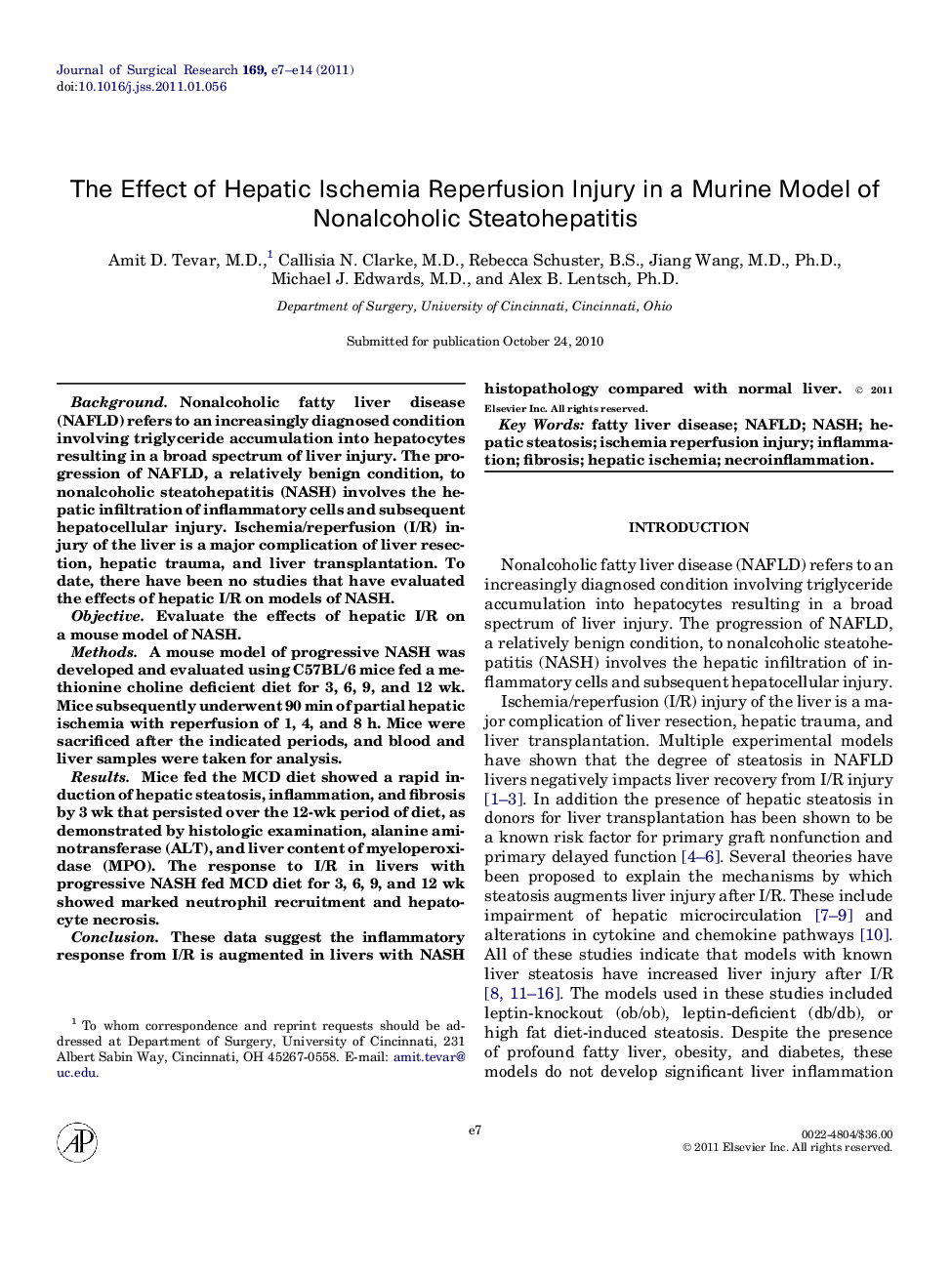| Article ID | Journal | Published Year | Pages | File Type |
|---|---|---|---|---|
| 4302234 | Journal of Surgical Research | 2011 | 8 Pages |
BackgroundNonalcoholic fatty liver disease (NAFLD) refers to an increasingly diagnosed condition involving triglyceride accumulation into hepatocytes resulting in a broad spectrum of liver injury. The progression of NAFLD, a relatively benign condition, to nonalcoholic steatohepatitis (NASH) involves the hepatic infiltration of inflammatory cells and subsequent hepatocellular injury. Ischemia/reperfusion (I/R) injury of the liver is a major complication of liver resection, hepatic trauma, and liver transplantation. To date, there have been no studies that have evaluated the effects of hepatic I/R on models of NASH.ObjectiveEvaluate the effects of hepatic I/R on a mouse model of NASH.MethodsA mouse model of progressive NASH was developed and evaluated using C57BL/6 mice fed a methionine choline deficient diet for 3, 6, 9, and 12 wk. Mice subsequently underwent 90 min of partial hepatic ischemia with reperfusion of 1, 4, and 8 h. Mice were sacrificed after the indicated periods, and blood and liver samples were taken for analysis.ResultsMice fed the MCD diet showed a rapid induction of hepatic steatosis, inflammation, and fibrosis by 3 wk that persisted over the 12-wk period of diet, as demonstrated by histologic examination, alanine aminotransferase (ALT), and liver content of myeloperoxidase (MPO). The response to I/R in livers with progressive NASH fed MCD diet for 3, 6, 9, and 12 wk showed marked neutrophil recruitment and hepatocyte necrosis.ConclusionThese data suggest the inflammatory response from I/R is augmented in livers with NASH histopathology compared with normal liver.
